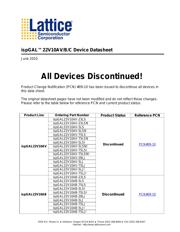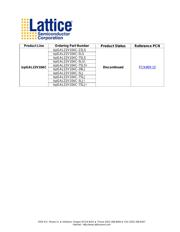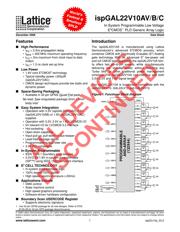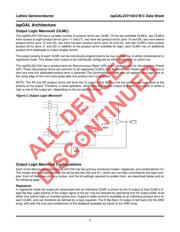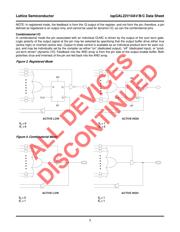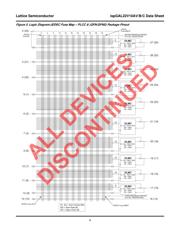Datasheet 搜索 > CPLD芯片 > Lattice Semiconductor(莱迪思) > ISPGAL22V10AV-75LNNI 数据手册 > ISPGAL22V10AV-75LNNI 数据手册 4/19 页
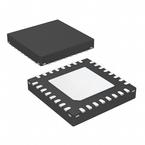
 器件3D模型
器件3D模型¥ 0
ISPGAL22V10AV-75LNNI 数据手册 - Lattice Semiconductor(莱迪思)
制造商:
Lattice Semiconductor(莱迪思)
分类:
CPLD芯片
封装:
QFN-32
Pictures:
3D模型
符号图
焊盘图
引脚图
产品图
页面导航:
导航目录
ISPGAL22V10AV-75LNNI数据手册
Page:
of 19 Go
若手册格式错乱,请下载阅览PDF原文件

Lattice Semiconductor ispGAL22V10AV/B/C Data Sheet
2
ispGAL Architecture
Output Logic Macrocell (OLMC)
The ispGAL22V10A has a variable number of product terms per OLMC. Of the ten available OLMCs, two OLMCs
have access to eight product terms (pins 17 and 27), two have ten product terms (pins 18 and 26), two have twelve
product terms (pins 19 and 25), two have fourteen product terms (pins 20 and 24), and two OLMCs have sixteen
product terms (pins 21 and 23). In addition to the product terms available for logic, each OLMC has an additional
product-term dedicated to output enable control.
The output polarity of each OLMC can be individually programmed to be true or inverting, in either combinatorial or
registered mode. This allows each output to be individually configured as either active high or active low.
The ispGAL22V10A has a product term for Asynchronous Reset (AR) and a product term for Synchronous Preset
(SP). These two product terms are common to all registered OLMCs. The Asynchronous Reset sets all registers to
zero any time this dedicated product term is asserted. The Synchronous Preset sets all registers to a logic one on
the rising edge of the next clock pulse after this product term is asserted.
NOTE: The AR and SP product terms will force the Q output of the flip-flop into the same state regardless of the
polarity of the output. Therefore, a reset operation, which sets the register output to a zero, may result in either a
high or low at the output pin, depending on the pin polarity chosen.
Figure 2. Output Logic Macrocell
Output Logic Macrocell Configurations
Each of the Macrocells of the ispGAL22V10A has two primary functional modes: registered, and combinatorial I/O.
The modes and the output polarity are set by two bits (S0 and S1), which are normally controlled by the logic com-
piler. Each of these two primary modes, and the bit settings required to enable them, are described below and on
the following page.
Registered
In registered mode the output pin associated with an individual OLMC is driven by the Q output of that OLMC’s D-
type flip-flop. Logic polarity of the output signal at the pin may be selected by specifying that the output buffer drive
either true (active high) or inverted (active low). Output tri-state control is available as an individual product-term for
each OLMC, and can therefore be defined by a logic equation. The D flip-flop’s /Q output is fed back into the AND
array, with both the true and complement of the feedback available as inputs to the AND array.
AR
SP
D
Q
Q
CLK
4 TO 1
MUX
2 TO 1
MUX
ALL DEVICES
DISCONTINUED
器件 Datasheet 文档搜索
AiEMA 数据库涵盖高达 72,405,303 个元件的数据手册,每天更新 5,000 多个 PDF 文件
